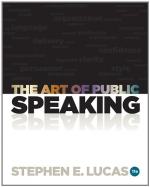And just here the fictionist, the poet, and the public speaker will see the value of productive imagery. True, the feet of the idol you build are on the ground, but its head pierces the clouds, it is a son of both earth and heaven.
One fact it is important to note here: Imagery is a valuable mental asset in proportion as it is controlled by the higher intellectual power of pure reason. The untutored child of nature thinks largely in images and therefore attaches to them undue importance. He readily confuses the real with the unreal—to him they are of like value. But the man of training readily distinguishes the one from the other and evaluates each with some, if not with perfect, justice.
So we see that unrestrained imaging may produce a rudderless steamer, while the trained faculty is the graceful sloop, skimming the seas at her skipper’s will, her course steadied by the helm of reason and her lightsome wings catching every air of heaven.
The game of chess, the war-lord’s tactical plan, the evolution of a geometrical theorem, the devising of a great business campaign, the elimination of waste in a factory, the denouement of a powerful drama, the overcoming of an economic obstacle, the scheme for a sublime poem, and the convincing siege of an audience may—nay, indeed must—each be conceived in an image and wrought to reality according to the plans and specifications laid upon the trestle board by some modern imaginative Hiram. The farmer who would be content with the seed he possesses would have no harvest. Do not rest satisfied with the ability to recall images, but cultivate your creative imagination by building “what might be” upon the foundation of “what is.”
II. THE USES OF IMAGING IN PUBLIC SPEAKING
By this time you will have already made some general application of these ideas to the art of the platform, but to several specific uses we must now refer.
1. Imaging in Speech-Preparation
(a) Set the image of your audience before you while you prepare. Disappointment may lurk here, and you cannot be forearmed for every emergency, but in the main you must meet your audience before you actually do—image its probable mood and attitude toward the occasion, the theme, and the speaker.
(b) Conceive your speech as a whole while you are preparing its parts, else can you not see—image—how its parts shall be fitly framed together.
(c) Image the language you will use, so far as written or extemporaneous speech may dictate. The habit of imaging will give you choice of varied figures of speech, for remember that an address without fresh comparisons is like a garden without blooms. Do not be content with the first hackneyed figure that comes flowing to your pen-point, but dream on until the striking, the unusual, yet the vividly real comparison points your thought like steel does the arrow-tip.




